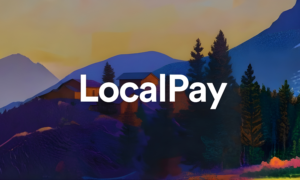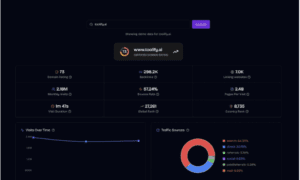The lending landscape in Australia and Singapore has evolved significantly to accommodate diverse borrower profiles, recognizing that traditional income-based lending criteria don’t always reflect borrowers’ true capacity to service loans or their financial stability.
This evolution has created two distinct but complementary lending approaches: asset-backed lending through second mortgages and specialized income-based loan solutions designed for lower-income earners.
Understanding these alternative lending options is crucial for borrowers who may not fit conventional lending criteria but still have legitimate borrowing needs and the capacity to service loans responsibly.
Whether you’re a property owner with substantial equity but limited current income, or an employed individual whose income level restricts access to traditional lending, alternative solutions can provide the financial flexibility you need.
Both Australia and Singapore offer sophisticated alternative lending markets that cater to diverse borrower needs while maintaining responsible lending standards.
The key to successful borrowing lies in understanding which approach best suits your specific circumstances and how to position yourself for approval while minimizing costs and risks.
Understanding Alternative Lending Approaches
Traditional lending has historically focused on income multiples and employment stability as primary criteria for loan approval. While these factors remain important, alternative lending recognizes that borrowers’ financial circumstances and capacity to service loans can be more complex than standard criteria suggest.
Asset-based lending represents one major alternative approach, where borrowers’ existing assets, particularly property serve as both security and primary qualification criteria.
This approach benefits property owners who may have substantial equity but limited current income due to retirement, self-employment, career changes, or economic circumstances beyond their control.
Income-based alternatives focus on specialized loan products designed for borrowers with steady employment but lower incomes that may not qualify for traditional loan amounts. These products often feature modified qualification criteria, government backing, or specialized terms that make borrowing accessible to broader segments of the population.
The regulatory environment in both countries supports responsible alternative lending while protecting consumers from predatory practices. These frameworks ensure that alternative lending products serve genuine consumer needs while maintaining appropriate safeguards and disclosure requirements.
Understanding your borrower profile helps determine which alternative lending approach offers the best fit for your circumstances. Factors including employment status, income level, asset ownership, credit history, and borrowing objectives all influence optimal lending solutions.
Second Mortgages: Leveraging Property Equity

Second mortgages provide property owners with access to their equity without requiring refinancing of existing mortgages.
This approach can be particularly valuable when current mortgage terms are favorable, when refinancing costs would be prohibitive, or when borrowing needs are temporary or specific in nature.
The fundamental principle of second mortgage lending involves using property equity as security for additional borrowing, with the second mortgage ranking behind the primary mortgage in terms of security priority.
This valuation process often reveals substantial borrowing capacity that may exceed what income-based lending would provide. Second mortgage loans in Australia have become increasingly sophisticated, with lenders offering various terms and structures to meet diverse borrower needs.
This subordinate position typically results in higher interest rates than primary mortgages but often provides better terms than unsecured lending alternatives. Property valuation forms the foundation of second mortgage lending, with professional assessments determining available equity after accounting for existing mortgage balances and required equity buffers.
From home improvement funding to debt consolidation and investment opportunities, these products provide flexibility that traditional lending often cannot match.
Qualification criteria for second mortgages typically emphasize property value and existing equity rather than extensive income documentation.
This focus can benefit retirees, self-employed individuals, or those experiencing temporary income disruptions who have substantial property assets but may struggle with traditional income verification requirements.
Interest rates on second mortgages generally fall between first mortgage rates and unsecured personal loan rates, reflecting the secured nature of the lending while acknowledging the subordinate security position.
This positioning often provides better rates than unsecured alternatives while accessing larger amounts than traditional lending might approve.
Income-Based Loan Solutions for Lower Earners
Specialized loan products for lower-income earners recognize that steady employment and responsible financial management can support borrowing even when income levels are modest. These products often feature government backing, community support, or specialized qualification criteria that make borrowing accessible to broader populations.
Employment stability often carries more weight than absolute income levels in these lending assessments, with consistent employment history demonstrating capacity to service loans even when income amounts are limited.
This approach benefits workers in essential services, part-time employees, or those in lower-paying but stable industries. Government-backed loan programs in both Australia and Singapore provide enhanced access to credit for lower-income borrowers through guarantee schemes, interest subsidies, or relaxed qualification criteria.
These programs often support specific objectives like education, housing, or small business development that contribute to economic participation. Credit union and community bank options frequently offer more flexible lending criteria than major banks, with local knowledge and community focus enabling more nuanced assessment of borrowing applications.
These institutions often provide personal service and understanding that larger institutions cannot match.
Microfinance and peer-to-peer lending platforms have emerged as additional options for lower-income borrowers, offering smaller loan amounts with flexible terms that traditional lenders may not provide.
These platforms often consider broader criteria in their lending decisions while providing competitive rates for qualified borrowers.
In Singapore, borrowers can look for loans for low income earners at Singsaver to explore various options specifically designed for their income bracket, including products with modified qualification criteria and competitive terms that recognize the unique needs of lower-income borrowers.
Comparative Analysis: Asset-Based vs Income-Based Lending
Understanding the key differences between asset-based and income-based alternative lending helps borrowers identify which approach best suits their specific circumstances and financial objectives. Each approach offers distinct advantages and considerations that affect suitability for different situations.
Borrowing capacity differs significantly between these approaches, with asset-based lending potentially providing access to larger amounts based on property equity, while income-based lending typically offers smaller amounts aligned with income servicing capacity.
The choice often depends on funding requirements and available security. Qualification criteria vary substantially, with asset-based lending emphasizing property value and equity while income-based lending focuses on employment stability and debt servicing capacity.
Some borrowers may qualify for one approach but not the other, making understanding these differences crucial for successful applications.
Interest rate structures reflect the different risk profiles of these lending approaches, with secured asset-based lending typically offering lower rates than unsecured income-based alternatives.
However, specialized income-based products may feature competitive rates through government backing or community support. Repayment flexibility can vary between approaches, with some asset-based products offering interest-only periods or flexible terms, while income-based products may feature fixed payment schedules aligned with employment income patterns.
Understanding these differences helps match products to cash flow requirements. Risk profiles differ between approaches, with asset-based lending carrying property security risks while income-based lending typically involves only credit rating implications in case of default. These risk differences affect both qualification criteria and ongoing obligations throughout the loan term.
Strategic Applications and Use Cases

The choice between second mortgages and income-based lending often depends on specific use cases and strategic financial objectives rather than simply comparing features and rates. Understanding optimal applications for each approach helps borrowers select appropriate solutions.
Debt consolidation represents a common application where second mortgages can provide substantial benefits by consolidating high-interest debt at lower secured rates. For property owners with significant equity, this approach can result in substantial interest savings and simplified payment management.
Home renovation and improvement projects often benefit from second mortgage financing, particularly when the improvements add value to the property securing the loan. This approach can provide substantial funding for major renovations while potentially improving overall property value.
Investment opportunities may favor different approaches depending on the investment type and required funding amounts. Property investors might utilize second mortgages to fund additional acquisitions, while smaller investments might be better served through income-based lending options.
Business funding needs can be addressed through either approach, with established businesses potentially accessing second mortgages for expansion while newer ventures might rely on income-based lending for startup capital. The choice often depends on business maturity and available security.
Emergency funding situations require different considerations, with second mortgages potentially providing larger amounts but longer approval times, while income-based options might offer faster access to smaller amounts for urgent needs.
Education financing can benefit from specialized income-based products designed for this purpose, though second mortgages might provide funding for major educational investments like overseas study or professional development programs that require substantial capital.
Documentation and Application Processes

Successful alternative lending applications require understanding specific documentation requirements and application processes that may differ significantly from traditional lending approaches. Preparation and understanding of these requirements can significantly improve approval chances and processing times.
Property documentation for second mortgages includes current property valuations, existing mortgage details, property ownership verification, and sometimes property improvement plans if funding is renovation-related. Professional property valuations form crucial components of these applications.
Income verification for income-based lending may involve employment letters, payslips, tax returns, and bank statements that demonstrate income stability and debt servicing capacity. Some lenders may accept alternative income verification methods for non-traditional employment arrangements.
Asset documentation can include property valuations, investment statements, superannuation balances, and other asset verification that supports borrowing applications. Comprehensive asset documentation can strengthen applications even when income levels are modest.
Credit history evaluation affects both lending approaches but may carry different weight depending on the primary qualification criteria. Understanding how credit history impacts specific products helps borrowers address any issues before applications.
Financial statements and budgeting information help lenders assess borrowing capacity and loan suitability regardless of the lending approach. Well-prepared financial documentation demonstrates responsibility and supports approval decisions.
Professional advice from mortgage brokers or financial advisors can be particularly valuable for alternative lending applications, as these professionals understand specific lender criteria and can help match borrowers with appropriate products and lenders.
Risk Management and Responsible Borrowing

Both asset-based and income-based alternative lending carry specific risks that borrowers must understand and manage appropriately. Responsible borrowing requires a comprehensive understanding of potential consequences and risk mitigation strategies.
Property risk in second mortgage lending means that failure to meet loan obligations could result in property loss through foreclosure proceedings. This represents the most significant risk of asset-based lending and requires careful consideration of repayment capacity and alternatives.
Income stability risks affect income-based lending particularly acutely, as changes in employment or income levels can impact repayment capacity. Building emergency funds and maintaining employment stability help mitigate these risks.
Interest rate risk affects both lending approaches but may manifest differently depending on whether rates are fixed or variable. Understanding rate structures and potential changes helps borrowers plan for different scenarios.
Over-borrowing risks emerge when loan amounts exceed comfortable servicing capacity relative to income or asset levels. Conservative borrowing approaches ensure sustainable debt levels while maintaining financial flexibility for other objectives.
Market risk considerations include potential changes in property values that could affect equity positions in asset-based lending, or economic conditions that might impact employment in income-based lending scenarios.
Exit strategy planning becomes crucial for both approaches, with borrowers understanding how they will repay or refinance loans at term end. Having clear repayment plans reduces risks while ensuring sustainable borrowing outcomes.
Regional Considerations: Australia vs Singapore
While both countries offer sophisticated alternative lending markets, important differences affect optimal strategies and available products. Understanding these regional characteristics helps optimize lending approaches for specific markets.
Australian market features include strong consumer protections through ASIC oversight, diverse lender options including banks, credit unions, and specialist lenders, and government programs supporting various borrower segments. The Australian market particularly emphasizes responsible lending obligations that protect consumers.
Property market dynamics in Australia affect second mortgage lending through varying property values, market cycles, and regional differences that impact available equity and lending terms. Understanding local property markets helps optimize timing and lending decisions.
Singapore’s lending environment features international banking presence, government housing policies that affect lending decisions, and regulatory frameworks that balance innovation with consumer protection. The Monetary Authority of Singapore maintains oversight that ensures market stability while encouraging competition.
Employment market considerations differ between countries, affecting income-based lending availability and terms. Singapore’s emphasis on skills development and employment support creates opportunities for specialized lending products that recognize career development potential.
Tax implications of different lending approaches vary between Australia and Singapore, with different treatment of interest deductibility, property ownership, and loan purposes. Understanding these implications helps optimize lending decisions within broader financial planning strategies.
Technology and Digital Innovation
Modern alternative lending increasingly leverages technology to improve application processes, risk assessment, and customer experiences. Understanding these technological developments helps borrowers navigate modern lending markets effectively.
Digital application processes have streamlined many aspects of alternative lending, with online applications, document upload capabilities, and automated processing reducing approval times while improving convenience for borrowers.
Alternative data sources enable lenders to assess creditworthiness using broader information than traditional credit bureaus provide, potentially benefiting borrowers with limited credit histories or non-traditional income sources.
Automated valuation models for property assessment can accelerate second mortgage approvals while maintaining accuracy in equity calculations. These technologies reduce costs while improving processing efficiency for both lenders and borrowers.
Artificial intelligence applications in credit assessment help lenders evaluate applications more comprehensively while identifying appropriate products for different borrower profiles. These technologies can benefit borrowers by improving matching with suitable lending options.
Mobile technology integration allows borrowers to manage applications and loan relationships through smartphone apps, providing convenient access to account information, payment processing, and customer service capabilities.
Building Long-Term Financial Success

Alternative lending should serve broader financial planning objectives rather than just addressing immediate funding needs. Strategic use of these products can support long-term wealth building while managing financial risks appropriately.
Credit building through responsible use of alternative lending products can improve future borrowing capacity and access to mainstream financial products. Consistent payment performance demonstrates financial responsibility that benefits long-term financial relationships.
Asset optimization through second mortgages can enable property improvements, debt consolidation, or investment activities that enhance overall financial positions. Strategic use of property equity can accelerate wealth building when managed responsibly.
Income improvement strategies may be supported through alternative lending for education, business development, or other investments that enhance earning capacity over time. These strategic applications can justify borrowing costs through improved long-term financial outcomes.
Financial diversification benefits from having access to multiple borrowing sources that can be utilized as circumstances require. Building relationships with alternative lenders provides options for future financial needs while reducing dependence on traditional banking relationships.
Conclusion: Choosing the Right Alternative Lending Approach
Alternative lending through second mortgages and income-based loan solutions provides valuable options for borrowers who may not fit traditional lending criteria but have legitimate borrowing needs and capacity to service loans responsibly.
Success requires understanding the strengths and limitations of different approaches while selecting products that align with specific circumstances and objectives. Asset-based lending through second mortgages offers substantial borrowing capacity for property owners while providing competitive rates and flexible terms.
This approach particularly benefits borrowers with substantial equity but limited current income who can leverage their property investments for various financial objectives. Income-based lending solutions recognize that steady employment and responsible financial management can support borrowing even when income levels are modest.
These specialized products often provide access to credit that might otherwise be unavailable while maintaining reasonable terms and consumer protections. The key to successful alternative lending lies in understanding available options, matching products to specific needs, and maintaining disciplined financial management throughout the borrowing relationship.
As these markets continue to evolve, borrowers who stay informed and make strategic choices will be best positioned to achieve their financial objectives while managing costs and risks effectively.






























